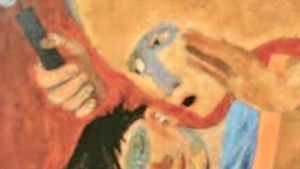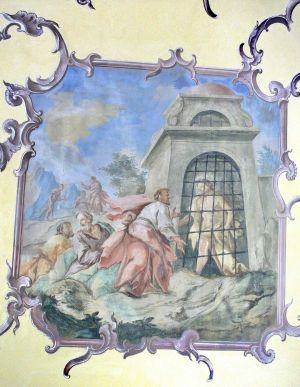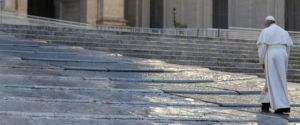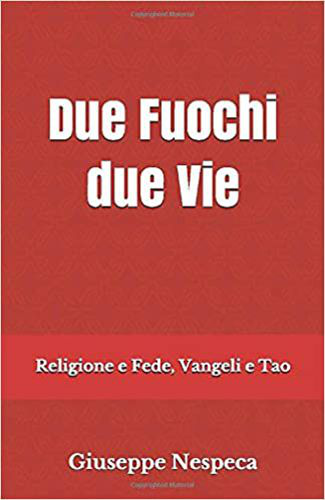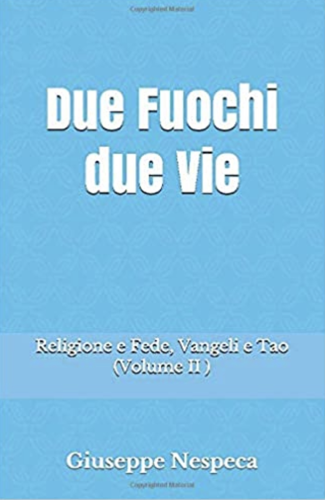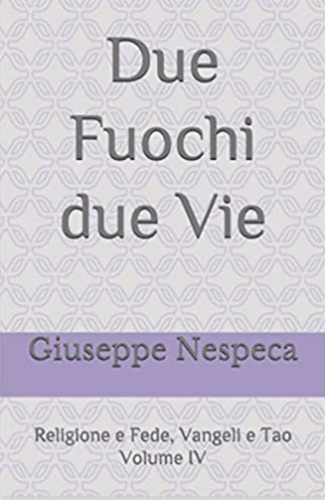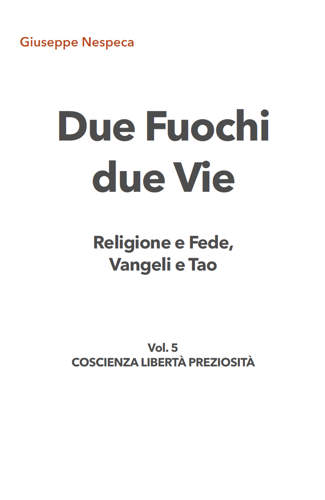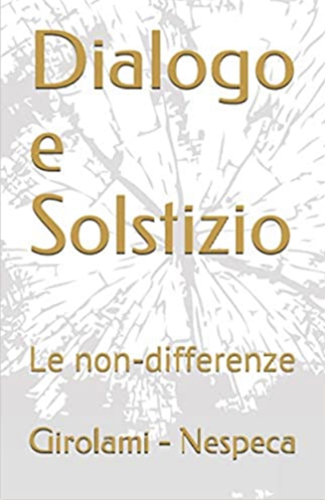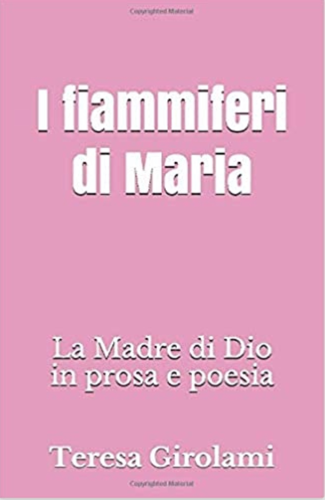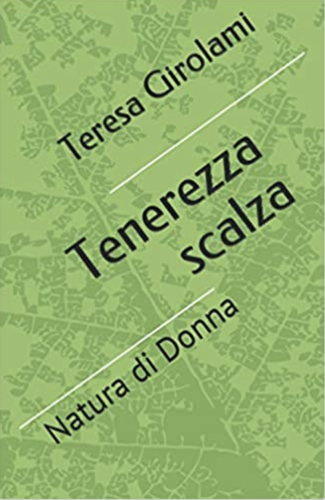
don Giuseppe Nespeca
Giuseppe Nespeca è architetto e sacerdote. Cultore della Sacra scrittura è autore della raccolta "Due Fuochi due Vie - Religione e Fede, Vangeli e Tao"; coautore del libro "Dialogo e Solstizio".
Third Sunday in Advent (year A) [14 December 2025]
May God bless us and may the Virgin protect us! "Rejoice always in the Lord... the Lord is near." The message of this third Sunday of Advent is the announcement of the joy of Christmas approaching. Advent teaches us to wait with patient hope for Jesus, who will surely come.
*First Reading from the Book of the Prophet Isaiah (35:1...10)
This passage comes from Isaiah's Little Apocalypse, known as the "Minor Apocalypse" (cc34-35), probably written by an anonymous author, and tells of the joyful return of Israel from exile in Babylon. We are in the period when the people suffered the sack of Jerusalem and spent over fifty years away from their land, experiencing humiliation and suffering that would discourage even the strongest. Isaiah, who lived in the 6th century BC during the exile in Babylon, reassures the frightened people: 'Behold your God: vengeance is coming, divine reward. He is coming to save you'. The result will be the liberation of the suffering: the blind will see, the deaf will hear, the lame will leap for joy, the mute will shout for joy. The people have suffered years of domination, deportation with humiliation and many trials, including religious ones: a time that discourages and makes them fear for the future. The author uses the expression 'God's vengeance', which may surprise us today. But here, vengeance is not punishment on men: it is the defeat of the evil that oppresses them and the liberation that God gives. God intervenes personally to save, redeem and restore dignity: the blind will see, the deaf will hear, the lame will leap and the mute will shout for joy. The return from exile is described as a triumphal march through the desert: the arid landscape is transformed into fertile and lush land, as beautiful as the mountains of Lebanon, the hills of Carmel and the plain of Sharon, symbols of abundance and beauty in the land of Israel. This journey shows that even the hardest trials can become a path of joy and hope when God intervenes. The desert, a symbol of hardship and trial, is thus transformed into a path of joy and hope thanks to God's intervention. The liberated people are called 'redeemed' and liberation is compared to 'redemption' in Jewish law: just as a close relative would release a debt or redeem a slave, God himself is our 'Go'el', the Relative who frees those who are oppressed or prisoners of evil. In this sense, redemption means liberation: physical, moral and spiritual. Singing 'Alleluia' means recognising that God leads us from servitude to freedom, transforming despair into joy and the desert into blossoming. This text reminds us that God never abandons us: even in the most difficult moments, his mercy and love free us and give us hope again. It shows how the language of the Bible can transform words that seem threatening into promises of salvation and hope, reminding us that God always intervenes to free us and restore our dignity.
Main elements +Context: Babylonian exile, Israel far from the land, anonymous author. +Isaiah's Little Apocalypse: prophecy of hope and return to the promised land. +God's vengeance: defeat of evil, not punishment of men. +Concrete liberation: the blind, deaf, lame, mute and prisoners redeemed. +The desert will blossom: difficulties transformed into joy and beauty. +Redemption: God as Go'el, liberator of the oppressed. +Alleluia: song of praise for the liberation received. +Spiritual message: God intervenes to free us and give us hope even in the hardest moments.
*Responsorial Psalm (145/146, 7-8, 9-10
This psalm, a 'psalm of Alleluia', is a song full of joy and gratitude, written after the return of the people of Israel from exile in Babylon, probably for the dedication of the rebuilt Temple. The Temple had been destroyed in 587 BC by Nebuchadnezzar, king of Babylon. In 538 BC, after the conquest of Babylon by the Persian king Cyrus, the Jews were allowed to return to their land and rebuild the Temple. The reconstruction was not easy due to tensions between those returning from Babylon and those who had remained in Israel, but thanks to the strength of the prophets Haggai and Zechariah, the work was completed in 515 BC, under King Darius. The dedication of the new Temple was celebrated with great joy (Ezra 6:16). The psalm reflects this joy: Israel recognises that God has remained faithful to the Covenant, as he did during the Exodus. God is the one who frees the oppressed, breaks the chains, gives bread to the hungry, gives sight to the blind and lifts up the weak. This image of God, a God who takes the side of the poor and feels compassion ('mercy' indicates as if the bowels were trembling), was not taken for granted in ancient times. It is Israel's great contribution to the faith of humanity: to reveal a God of love and mercy. The psalm expresses this by saying that the Lord supports the widow and the orphan. The people are invited to imitate God in the same mercy, and the Law of Israel contains many rules for the protection of the weak (widows, orphans, foreigners). The prophets judged Israel's fidelity to the Covenant on the basis of this behaviour. At a deeper level, the psalm shows that God frees us not only from external oppression, but also from internal oppression: spiritual hunger finds its food in the Word; inner blindness is illuminated; the chains of hatred, pride and jealousy are broken. Although we do not see it here, this psalm is actually framed by the word 'Alleluia', which according to Jewish tradition means to sing the praise of God because He leads from slavery to freedom, from darkness to light, from sadness to joy. We Christians read this psalm in the light of Jesus Christ: He gave bread to his contemporaries and continues to give the "bread of life" in the Eucharist; He is the light of the world (Jn 8:12); in his resurrection, he definitively freed humanity from the chains of death. Finally, since man is created in the image of God, every time he helps a poor person, a sick person, a prisoner, a stranger, he manifests the very image of God. And every gesture made "to the least" contributes to the growth of the Kingdom of God. A catechumen, reading about the miracle of the multiplication of the loaves, asked, "Why doesn't Jesus do this today for all the hungry?" And after a moment she replied, "Perhaps he is counting on us to do it."
Important elements to remember +Historical context: psalm written after the return from exile and the reconstruction of the Temple (587–515 BC). +Central theme: the joy of the people for God's faithfulness and their liberation. +Revelation of God: God is merciful and defends the oppressed, the poor, the weak. +Commitment of the people: to imitate God in works of mercy towards all the oppressed. +Spiritual reading: God frees us from inner chains (hatred, pride, spiritual blindness). +Alleluia: symbol of the passage from slavery to freedom and from sadness to joy. +Christian reading: fulfilment in Christ, who gives true bread, enlightens, liberates, saves. +Image of God in man: every gesture of love towards the most fragile makes the image of God visible. +Christian responsibility: God also counts on our commitment to nourish, liberate and support those who suffer.
*Second Reading from the Letter of St James the Apostle (5:7-10)
Christian tradition recognises three figures named James who were close to Jesus: James the Greater, son of Zebedee and brother of John, with an impetuous character, present at the Transfiguration and in Gethsemane; James, son of Alphaeus, one of the Twelve; James, 'brother/cousin' of the Lord, leader of the Church of Jerusalem and probable author of the Letter of James. The text highlights a fundamental theme for the early Christians: the expectation of the coming of the Lord. Like Paul, James always looks to the horizon of the final fulfilment of God's plan. It is significant that at the very beginning of Christian preaching, the end of the world was most ardently desired, perhaps because the Resurrection had given a taste of future glory. In this expectation, James repeats a crucial invitation: patience, a word which in the original Greek (makrothyméo) means 'to have long breath, to have a long spirit'. Waiting for the coming of the Lord is a long-distance race, not a sprint: faith must learn to endure over time. When the early Christians realised that the parousia was not coming immediately, waiting became a true test of fidelity.
To live this endurance, James offers two models: the farmer, who knows the rhythm of the seasons, trusting in God who sends rain 'in its season' (Deut 11:14), and the other model: the prophets, who endured hostility and persecution to remain faithful to their mission. James asks Christians to have stamina (perseverance/patience) and a steadfast heart ("Strengthen your hearts"). In verse 11, which follows this text, James also quotes Job, the only case in the New Testament, as the supreme example of perseverance: those who remain steadfast like him will experience the Lord's mercy. Patience is not only personal: it is lived out in community relationships. James takes up Jesus' teaching: do not complain about one another, do not judge one another, do not murmur. 'The Judge is at hand': only God truly judges, because he sees the heart. Man easily risks confusing wheat and weeds. The lesson is also for us: we often lack the breath of hope, and at the same time we give in to the temptation to judge. Yet Jesus' words about the speck and the log remain relevant today.
Important points to remember: + Of the three James, it is James the Greater, the son of Alphaeus, the 'brother' of the Lord, who is the probable author of this Letter, which reflects the central theme of waiting for the coming of the Lord. + Patience is repeated several times and is understood as 'long breath', an endurance race. + The initial Christian expectation was very intense: it was thought that Christ's return was imminent. + Two models of perseverance: the farmer (trust in God's timing) and the prophets (courage in mission). + v.11 not in this text but immediately after John
cites Job as an example of endurance: the only citation in the New Testament, a symbol of perseverance in trials. +Community mission: do not judge, do not murmur, do not complain because 'the Judge is at the door'. He invites us to live knowing that only God judges rightly. +The danger today is also a lack of spiritual breath and the risk of judging others.
*From the Gospel according to Matthew (11:2-11)
Last Sunday we saw John the Baptist baptising along the Jordan and announcing: 'After me comes one'. When Jesus asked to be baptised, John recognised him as the expected Messiah, but the months passed and John was put in prison by Herod around the year 28, at which time Jesus began his public preaching in Galilee. Jesus began his public life with famous discourses, such as the Sermon on the Mount and the Beatitudes, and with many healings. However, his behaviour was strange in the eyes of the people: he surrounded himself with "unreliable" disciples (publicans, people of different origins and characters); he was not an ascetic like John, he ate and drank like everyone else, and he showed himself among the common people; he never claimed the title of Messiah, nor did he seek power. From prison, John received news from those who kept him informed and began to doubt: 'Have I been deceived? Are you the Messiah?' This question is crucial because it concerns both John and Jesus, who was forced to confront the expectations of those who awaited him. Jesus does not answer with a yes or no, but quotes the prophecies about the works of the Messiah: the blind regain their sight, the lame walk, lepers are cleansed, the deaf hear, the dead are raised, and the poor receive the good news (Isaiah 35:5-6; 61:1). With these words, Jesus invites John to see for himself whether he is doing the works of the Messiah, confirming that yes, he is the Messiah, even if his manners seem strange. The true face of God is revealed in his service to humanity, not in accordance with expectations of power or glory. Finally, Jesus praises John, saying that he is blessed because he "does not find cause for scandal in me." John sets an example of faith: even in doubt, he does not lose confidence and seeks the truth directly from Jesus himself. Jesus concludes by explaining that John is the greatest of the prophets because he paves the way for the Messiah, but with the coming of Jesus, even the least in the Kingdom of Heaven is greater than John, emphasising that the content of Christ's message exceeds all human expectations: "The Word became flesh and dwelt among us".
Important elements to remember +John the Baptist announces the Messiah and baptises along the Jordan. +Jesus begins his public life after John's arrest, in Galilee, with speeches and miracles. +Jesus' "strange" behaviour: he associates with everyone, even the most marginalised, does not claim titles or power, eats and presents himself like ordinary people.+John's doubts: he sends his disciples to ask if Jesus is truly the Messiah. + Jesus' response: he cites the prophetic works of the Messiah (healings, liberations, proclamation to the poor).+ John's active faith: he does not remain in doubt, but asks Jesus directly for clarification. + Joy and surprise: the face of God is revealed in the service of man, not according to traditional expectations. + John as precursor: the greatest of the prophets, but with Jesus, the smallest in the Kingdom is the greatest. + Final message: Christ is the Word incarnate, the fulfilment of God's promises.
*Here is a quote from St Gregory the Great in Homily 6 on the Gospels, commenting on the episode: "John does not ignore who Jesus is: he points to him as the Lamb of God. But, sent to prison, he sends his disciples not to know him, but so that they may learn from Christ what he already knew. John does not seek to be taught, but to teach. And Christ does not respond with words, but with deeds: he makes it clear that he is the Messiah not by saying so, but by showing the works announced by the prophets." He adds: "The Lord proclaims blessed those who are not scandalised by him, because in him there is greatness hidden beneath a humble appearance: those who are not scandalised by his humility recognise his divinity." This commentary perfectly illuminates the heart of the Gospel: John does not doubt for himself, but to help his disciples recognise that Jesus is the expected Messiah, even though he presents himself in a surprising and humble way.
+Giovanni D'Ercole
Casual Incarnation, in tenuality and density
(Mt 1:1-17)
In order to reach the fullness of the Son, God did not claim to overcome concrete events, and vice versa He assumed and valued them.
In history, the Eternal manages to give wings not so much to strength and genius, but to all the poor origins, to the smallness of our nature, which suddenly turns into totally unpredictable wealth.
If we constantly tear the wire, the Lord reannounts it - not to fix and resume as before, but to redo an entire new plot.
Right from the existential falls.
It is those earthy moments that force humanity to change direction 'symbol’ - and not repeat itself, stagnating.
As a result of inner crashes and rethinking, how many people have realized their destiny, diverting the path traced, quiet, protected and comfortable [Cottolengo, mother Teresa, so on]!
From the mud of the swamp, sprout that beautiful and clean flowers which do not even resemble those that in the various stages of life we had ever imagined we could reach.
The tumbles of the protagonists of the history of salvation did not come out of weakness. They were signs of a bad or partial use of resources; stimuli to change the eye, re-evaluate the point of view and many hopes.
Those collapses have configured new challenges: they have been interpreted as strong provocations: to shift energies and change track.
The Ascents resulting from the declines have turned into new opportunities. Instead, ready-made solutions turn off personality traits.
Even our crisis becomes serious only when failures do not lead to new knowledge and different paths.
Strange this bond between our abysses and the apexes of the Spirit: it is the Incarnation, no theory - all reality.
There is no Gift that resembles us at the divine top and that reaches us without passing and involving the finitude dimension.
The holes in the water convey the all-human figure of who we are. And right there we grasp the great Father Secret on us.
It’s the paradoxical "descents" that spiritualize us; through a work of the soul that is rammed by events, so that it moves its gaze, changes destiny.
And tends to acquire new awareness, internalizes different evaluations, sees and embraces other varied horizons, even missionary.
In such a way, the crack that throws you down can be more consistent than any progress; not because it initiates an ascesis: it becomes contact with the "earth" - where you find the sap that really corresponds to you, to regenerate.
The decline or even the ruin of a reassuring status has in every occurrence a propulsive, regenerative, transmutative function.
Normal, after all, and in which the God’s history totally recognizes itself.
To internalize and live the message:
What were your turning points?
What deviation made your life realize?
[Weekday Liturgy, December 17]
Casual Incarnation, in tenuousness and density
(Mt 1:1-17)
In the ancient East, genealogies mentioned only men, and it is surprising that Mt mentions the names of no less than five women - considered merely servile, untrustworthy creatures, impure by nature.
But in the story of Mary's four companions there is not a little that is a-normal [also because of the model of life chosen] that is nevertheless worthwhile.
Here we are then challenged by the Gospel on the weight to be given to the rigidity of norms, which in the history of spirituality have often devoured the spontaneous being of those called by the Father (simply to express themselves).
Cultures animated by the Wisdom of Nature also testify to this weight.
The Tao Tê Ching (LVII) writes: "When the world is governed by correction, weapons are used with falsehood [...] That is why the saint says: I do not act and the people transform themselves [...] I do not yearn and the people make themselves simple".
In order to reach the human fullness of the Son, God did not pretend to overcome concrete events, on the contrary He assumed them and valorised them.
The path that leads to Christ is not a matter of climbs, nor of results or performances to be calibrated more and more in a linear crescendo that is therefore moralising and dirigiste (which does not impose turning points that count, nor does it solve the real problems).
Commenting on the Tao(i), Master Ho-shang Kung writes: "Mystery is Heaven. He says that both the man who has desires and the man who has none equally receive ch'ì from Heaven. Within heaven there is another heaven; in the ch'ì there is density and tenuity".
In history, the Eternal One manages to give unfurled wings not so much to strength and genius, but to all the poor beginnings, to the paucity of our nature, which suddenly turns into totally unpredictable wealth.
And if we tear the thread again and again, the Lord knits it back together - not to fix it, patch it up and resume as before, but to make a whole new weave. Precisely from the falls.
It is those moments of the earth-to-earth divide that force humanity to change symbolic direction and not repeat itself, stagnating in the circuit of the usual cerebral and purist perimeters - habitual, and where everything is normal.
As a result of inner crashes and afterthoughts, how many people have fulfilled their destiny by deviating from the marked, quiet, protected and comfortable path (Cottolengo, Mother Teresa, etc.)!
Out of the mire of the swamp sprout beautiful, clean flowers, which do not even resemble those we had ever imagined we could contemplate in the various stages of life.
The tumbles of the protagonists of salvation history did not come from weakness. They were signs of bad or partial use of resources; stimuli to change one's eye, re-evaluate one's point of view and many hopes.
Those collapses configured new challenges: they were interpreted as strong provocations: to shift energies and change track.
The upturns following the downturns turned into new opportunities, not at all unexpected, fully discordant with the ready-made solutions that extinguish characters.
Even our crisis only becomes serious when the failures do not result in new insights and different paths that we had not thought of (perhaps in any of our good intentions).
Strange this link between our abysses and the heights of the Spirit: it is the Incarnation, no theory - all reality.
There is no Gift that resembles the divine top and comes to us without passing through and involving the dimension of finitude.
The holes in the water convey the all-too-human figure of what we are - behind illusions or the very appearances we do not want to put down, to convince ourselves that we are instead identified 'characters'.
But the ambivalences and flaws continue to want to unhinge our gaze and destiny elsewhere, with respect to common expectations [today also the paroxysm of the point in the polls].
Behind the mask and beyond the convictions acquired from environment, manners or procedures... there is the Father's great Secret about us.
It is precisely the descents that spiritualise, through a working of the soul that is rammed by events, so that it turns to acquire new awareness, internalises different evaluations, sees and embraces other varied horizons, even missionary ones.
The crack that knocks down can be more consistent than any progress; not because it initiates asceticism: it becomes contact with the 'earth' - where we find the sap that really corresponds to us, to regenerate.
The fall or even the ruin of a reassuring status has in every happening a propulsive, regenerative, transmutative function; normal, after all, and in which the story of God is totally recognised.
To internalise and live the message:
What were your turning points?
What deviation has fulfilled you?Not only through men, but with them
With today's liturgy we enter the final stretch of the Advent journey, which calls for us to intensify our preparation, in order to celebrate the Lord's Christmas with faith and joy, welcoming with intimate awe God who makes himself close to man, to each one of us.
The first reading presents us with the elderly Jacob gathering his sons for the blessing: it is an event of great intensity and emotion. This blessing is like a seal of fidelity to the covenant with God, but it is also a prophetic vision, looking forward and indicating a mission. Jacob is the father who, through the not always straightforward paths of his own history, comes to the joy of gathering his children around him and plotting the future of each one and their descendants. In particular, today we have heard the reference to the tribe of Judah, whose royal strength is exalted, represented by the lion, as well as to the monarchy of David, represented by the sceptre, the staff of command, which alludes to the coming of the Messiah. Thus, in this dual image, the future mystery of the lion who becomes a lamb, of the king whose staff of command is the cross, the sign of true kingship, transpires. Jacob has gradually become aware of the primacy of God, has understood that his path is guided and sustained by the Lord's faithfulness, and cannot but respond with full adherence to God's covenant and plan of salvation, becoming in turn, together with his own descendants, a link in the divine plan.
The passage in Matthew's Gospel presents us with the "genealogy of Jesus Christ, son of David, son of Abraham" (Mt 1:1), further emphasising and explicating God's faithfulness to the promise, which He fulfils not only through men, but with them and, as with Jacob, sometimes through tortuous and unforeseen ways. The awaited Messiah, the object of the promise, is true God, but also true man; Son of God, but also Son born of the Virgin, Mary of Nazareth, holy flesh of Abraham, in whose seed all the peoples of the earth shall be blessed (cf. Gen 22:18). In this genealogy, besides Mary, four women are mentioned. They are not Sarah, Rebecca, Leah, Rachel, i.e. the great figures of Israel's history. Paradoxically, instead, it is four pagan women: Racab, Ruth, Bathsheba, Tamar, who apparently 'disturb' the purity of a genealogy. But in these pagan women, who appear at decisive points in salvation history, the mystery of the church of the pagans, the universality of salvation, shines through. They are pagan women in whom the future, the universality of salvation, appears. They are also sinful women, and so the mystery of grace also appears in them: it is not our works that redeem the world, but it is the Lord who gives us true life. They are sinful women, yes, in whom appears the greatness of the grace that we all need. Yet these women reveal an exemplary response to God's faithfulness, showing faith in the God of Israel. And so we see the church of the Gentiles, a mystery of grace, faith as a gift and a path to communion with God. Matthew's genealogy, therefore, is not simply the list of generations: it is the history realised primarily by God, but with the response of humanity. It is a genealogy of grace and faith: it is precisely on the absolute faithfulness of God and the solid faith of these women that the continuation of the promise made to Israel rests.
[Pope Benedict, homily at the Aletti Centre, 17 December 2009].
Man, God's surname
Man is God's surname: the Lord in fact takes the name from each one of us - whether we are saints or sinners - to make it his own surname. For in becoming incarnate, the Lord made history with humanity: his joy was to share his life with us, 'and this makes one weep: so much love, so much tenderness'.
It was with thoughts turned to the now imminent Christmas that Pope Francis commented on Tuesday 17 December on the two readings proposed by the liturgy of the word, taken respectively from Genesis (49:2, 8-10) and the Gospel of Matthew (1:1-17). On the day of his 77th birthday, the Holy Father presided over morning Mass as usual in the chapel of Santa Marta. Concelebrating among others was Cardinal Dean Angelo Sodano, who expressed the best wishes of the entire College of Cardinals to him.
In his homily, which focused on the presence of God in the history of humanity, the Bishop of Rome identified two terms - inheritance and genealogy - as the keys to interpreting the first reading (concerning the prophecy of Jacob gathering his sons and predicting a glorious descent for Judah) and the Gospel passage containing the genealogy of Jesus. Focusing in particular on the latter, he emphasised that it is not 'a telephone book', but 'an important subject: it is pure history', because 'God sent his son' among men. And, he added, "Jesus is consubstantial with his father, God; but he is also consubstantial with his mother, a woman. And this is that consubstantiality of the mother: God made himself history, God wanted to make himself history. He is with us. He has made a journey with us'.
A journey,' continued the bishop of Rome, 'that began from afar, in Paradise, immediately after original sin. From that moment, in fact, the Lord 'had this idea: to make a journey with us'. Therefore, "he called Abraham, the first one named in this list, and invited him to walk. And Abraham began that journey: he begat Isaac, and Isaac Jacob, and Jacob Judah". And so on through human history. 'God walks with his people', therefore, because 'he did not want to come to save us without history; he wanted to make history with us'.
A history, said the Pontiff, made of holiness and sin, because in the list of Jesus' genealogy there are saints and sinners. Among the former the Pope recalled "our father Abraham" and "David, who after sin converted". Among the latter, he singled out "high-level sinners, who did big sins", but with whom God equally "made history". Sinners who failed to respond to the plan God had imagined for them: like 'Solomon, so great and intelligent, who ended up as a poor man who did not even know his name'. Yet, Pope Francis noted, God was also with him. "And this is the beauty of it: God makes history with us. Moreover, when God wants to say who he is, he says: I am the God of Abraham, of Isaac, of Jacob".
That is why to the question "what is God's surname?" for Pope Francis it is possible to answer: "It is us, each one of us. He takes the name from us to make it his surname". And in the example offered by the Pontiff there are not only the fathers of our faith, but also ordinary people. "I am the God of Abraham, of Isaac, of Jacob, of Pedro, of Marietta, of Armony, of Marisa, of Simon, of everyone. He takes the surname from us. God's surname is each one of us,' he explained.
Hence the realisation that by taking 'the surname from our name, God has made history with us'; indeed, more than that: 'He has let history be written by us'. And we still continue to write 'this history', which is made 'of grace and sin', while the Lord does not tire of coming after us: 'this is God's humility, God's patience, God's love'. Moreover, even 'the book of Wisdom says that the joy of the Lord is among the children of man, with us'.
So 'as Christmas approaches', it came naturally to Pope Francis - as he himself confided in concluding his reflection - to think: 'If he made his history with us, if he took his last name from us, if he let us write his history', we for our part should let God write ours. Because, he clarified, 'holiness' is precisely 'letting the Lord write our story'. And this is the Christmas wish that the Pontiff wanted to make 'for all of us'. A wish that is an invitation to open our hearts: "Let the Lord write history for you and let you let him write it for you."
[Pope Francis, S. Marta homily, in L'Osservatore Romano 18/12/2013]
Dear Friends,
With today's Liturgy we enter into the last stage of the Advent journey, which urges us to intensify our preparation, to celebrate the Lord's Birth with faith and joy, welcoming with deep wonder God who makes himself close to human beings, to each one of us.
The First Reading presents to us the aged Jacob who gathers his sons to give them his blessing. It is an event of great intensity and emotion. This blessing is like their seal of fidelity to the Covenant with God; but it is also a prophetic vision that looks ahead and indicates a mission. Jacob is a father who, on the paths of his own history that have not always been straight, achieves the joy of gathering his children round him and predicting the future of each one and of their descendents. Today, in particular, we heard the reference to the tribe of Judah whose royal power is exalted, represented by the lion, as well as the monarchy of David, represented by the sceptre, by the ruler's staff that alludes to the coming of the Messiah. Thus through this duel image, the mysterious future of the lion that becomes a lamb, of the king whose ruler's staff becomes the Cross, is the sign of true kingship. Jacob has gradually become aware of the primacy of God, he has realized that his journey is guided and sustained by the Lord's faithfulness, and cannot but answer with full adherence to God's Covenant and plan of salvation becoming in turn, together with his own descendants, a link in the divine plan.
The Gospel of Matthew presents to us the "genealogy of Jesus Christ, the son of David, the son of Abraham" (Mt 1: 1), underlining and further explaining God's fidelity to the promise that he puts into practice not only through human beings but with them, and, as for Jacob, sometimes in tortuous and unexpected ways. The awaited Messiah, the subject of the promise, is true God but also true man; the Son of God, but also the Son born of the Virgin Mary of Nazareth, the holy flesh of Abraham in whose descendants all the peoples of the earth would be blessed (cf. Gn 22: 18). In this genealogy, in addition to Mary, four other women are recalled. They are not Sarah, Rebecca, Leah, or Rachel, that is, the great figures of the history of Israel. Instead, paradoxically they are four pagan women: Rahab, Ruth, Bathsheba, and Tamar, who seemingly "cloud" the purity of a genealogy. Yet, in these pagan women who appear at crucial points in the history of salvation, also appears the mystery of the church of the pagans, the universality of salvation. They are pagan women in whom appears the future, the universality of salvation. They are also sinful women, and thus the mystery of grace appears in them: it is not our works that redeem the world, but rather the Lord who gives us true life. They are sinful women, yes, in whom appears the greatness of the grace that we all need. Yet these women reveal an exemplary response to God's faithfulness, showing their faith in the God of Israel. And thus we see through the Church of the pagans, the mystery of grace, faith as a gift and as the way to communion with God. Matthew's genealogy, therefore, is not merely a list of generations: it is history brought about first by God, but with humanity's response. It is a genealogy of grace and faith: it is precisely on the absolute fidelity of God and on the sound faith of these women that the fulfilment of the promise made to Israel is founded.
[Pope Benedict, homily at the Aletti Centre, 17 December 2009]
In the Human Family, linking generations, to understand our insertion
Dear Brothers and Sisters,
1. Reflection on the mystery of Jesus, which especially marks this first year of immediate preparation for the Great Jubilee of the Year 2000, goes well with the Christmas holidays. Continuing the meditation I began a few Sundays ago, today I would like to reflect on a title Jesus is given more than once in the Gospels. He is called “son of David”. Matthew’s Gospel opens precisely with these words: “The book of the genealogy of Jesus Christ, the son of David” (Mt 1:1).
We might say that it is a family title. Through Joseph, his putative father, Jesus is linked to the entire human chain which reaches from son to father back to King David. This genealogical relationship emphasizes the concreteness of the Incarnation: by becoming man, the Eternal Word of God fully entered the human family, putting himself in the lineage of a specific family tradition. In this way he also wanted to be one of us, experiencing that unique bond which, linking generations, enables each person to feel rooted not only in time and space, but also in a beneficial fabric of memories and affections.
2. However, in addition to this anthropological meaning, the title “son of David” also has a specific sense which casts light on God’s plan. In fact, it reminds us that the Christian event is the culmination of a salvation history which God has gradually brought about since the Old Testament, offering the Jewish people a special “covenant” and making them the bearer of saving promises which in Jesus of Nazareth would be fulfilled for all humanity. Therefore when his contemporaries call him “son of David”, they are recognizing that the ancient promises are fulfilled in him and proclaim the definitive realization of the messianic hope. Every man and woman can now draw from this hope, making his own the cry which is found on the lips of blind Bartimaeus in the Gospel: “Jesus, son of David, have mercy on me!” (Mk 10:47). By calling on the “son of David”, humanity can rediscover light for the gaze of its heart.
3. May Mary, the humble girl of Nazareth, who in giving birth to the Son of God introduced him into David's genealogy and into the entire human family, help us to grow in our understanding of how we are involved in this history of salvation. Let us be guided by her in the intimacy of her Holy Family where the seed of the new humanity is sown. At the beginning of this new year, may the Blessed Virgin bless all the families of the world, so that in Jesus they may recognize their true Saviour.
[Pope John Paul II, Angelus 5 January 1997]
Man is God's surname: the Lord in fact takes the name from each of us - whether we are saints or sinners - to make it his own surname. For in becoming incarnate, the Lord made history with humanity: his joy was to share his life with us, 'and this makes one weep: so much love, so much tenderness'.
It was with thoughts turned to the now imminent Christmas that Pope Francis commented on Tuesday 17 December on the two readings proposed by the liturgy of the word, taken respectively from Genesis (49:2, 8-10) and the Gospel of Matthew (1:1-17). On the day of his 77th birthday, the Holy Father presided over morning Mass as usual in the chapel of Santa Marta. Concelebrating among others was Cardinal Dean Angelo Sodano, who expressed the best wishes of the entire College of Cardinals to him.
In his homily, which focused on the presence of God in the history of humanity, the Bishop of Rome identified two terms - inheritance and genealogy - as the keys to interpreting the first reading (concerning the prophecy of Jacob gathering his sons and predicting a glorious descent for Judah) and the Gospel passage containing the genealogy of Jesus. Focusing in particular on the latter, he emphasised that it is not 'a telephone book', but 'an important subject: it is pure history', because 'God sent his son' among men. And, he added, 'Jesus is consubstantial with his father, God; but he is also consubstantial with his mother, a woman. And this is that consubstantiality of the mother: God made himself history, God wanted to make himself history. He is with us. He has made a journey with us'.
A journey,' continued the bishop of Rome, 'that began from afar, in Paradise, immediately after original sin. From that moment, in fact, the Lord 'had this idea: to make a journey with us'. Therefore, 'he called Abraham, the first one named in this list, and invited him to walk. And Abraham began that journey: he begat Isaac, and Isaac Jacob, and Jacob Judah'. And so on through human history. God walks with his people', therefore, because 'he did not want to come to save us without history; he wanted to make history with us'.
A history, said the Pontiff, made of holiness and sin, because in the list of Jesus' genealogy there are saints and sinners. Among the former the Pope recalled 'our father Abraham' and 'David, who after sin converted'. Among the latter, he singled out "high-level sinners, who did big sins", but with whom God equally "made history". Sinners who failed to respond to the plan God had imagined for them: like 'Solomon, so great and intelligent, who ended up as a poor man who did not even know his name'. Yet, Pope Francis noted, God was also with him. "And this is the beauty of it: God makes history with us. Moreover, when God wants to say who he is, he says: I am the God of Abraham, of Isaac, of Jacob'.
That is why to the question "what is God's surname?" for Pope Francis it is possible to answer: "It is us, each one of us. He takes the name from us to make it his surname'. And in the example offered by the Pontiff there are not only the fathers of our faith, but also ordinary people. "I am the God of Abraham, of Isaac, of Jacob, of Pedro, of Marietta, of Armony, of Marisa, of Simon, of everyone. He takes the surname from us. God's surname is each one of us,' he explained.
Hence the realisation that by taking 'the surname from our name, God has made history with us'; indeed, more than that: 'He has allowed himself to write history with us'. And we still continue to write 'this history', which is made 'of grace and sin', while the Lord does not tire of coming after us: 'this is God's humility, God's patience, God's love'. Moreover, even 'the book of Wisdom says that the joy of the Lord is among the children of man, with us'.
This is why 'as Christmas approaches', it came naturally to Pope Francis - as he himself confided in concluding his reflection - to think: 'If he made his history with us, if he took his last name from us, if he let us write his history', we for our part should let God write ours. Because, he clarified, 'holiness' is precisely 'letting the Lord write our story'. And this is the Christmas wish that the Pontiff wanted to make 'for all of us'. A wish that is an invitation to open our hearts: "Let the Lord write history for you and let him write it for you."
[Pope Francis, S. Marta homily, in L'Osservatore Romano 18/12/2013]
Two sons: «No» and «Me!»
(Mt 21:28-32)
In the rabbis' tales the «Son» was only one: Israel! In the teaching of Christ, however, even a reckless remains a son.
The Master of the Vineyard image of the chosen people, turns to his «prototype» of man with tenderness and maternal bowels: «My little child».
He tries to make him understand: «The unfamiliar land is full of dissensions and grudges, instead the Vineyard is yours; committed therefore to building the world of joy».
But it’s basically normal to desist: «I don’t want to» - because we are often attracted not by the Beatitudes, but to worldly criteria.
Working for the life of others, recognizing their dignity and promoting it does not arise immediately and spontaneously to everyone; on the contrary, it seems onerous.
Yet it is the difference that gives us the cue, not the rule or the reproach.
The perception of what appears “foreign” becomes a rare insight into one's own essence, a dilation of the Ego - a growing movement and process that leads to an understanding of the You in the Ego itself.
Trivial instinctive reactions must be understood, because pre-emptive condemnations block growth.
Eccentricity of the brother is the paradoxical starting point for finding himself and one’s own way.
Of course, repulsion can emerge at first; there is no need to be scandalized, nor to accuse. Recovering the deep human dimension is not a piece of cake.
Moreover, we know from experience: the most convinced ‘Yes’ passes through an initial ‘No’.
The inner struggle is to be reckoned with - finally it itself will affect far beyond formal adherence.
In short, the truest ‘Yes’ comes from a request for explanation.
Although the habitual are ready to show the best intentions right away, they become all showcase and no substance; and only empty words.
The Father therefore turned to the promises’ son: «I, Lord!». How to say: «There is Me here; why think of others?».
The exaggeratedly kindred and positive reaction indicates that the customary son... did not understand.
This “son” certainly disagreed with the Father’s design - so deep and demanding - and he thought in his own way how one behaves in the Vineyard.
Therefore, he beluded himself to be benefitted, instead of Saved.
In short, the choice is between Faith or protocols: «By now, various manifest sinners are surpassing you» (v.31).
[The discrimination of life in the Spirit? The exception that becomes promotion].
Women and men respond «Here I am» to the Appeal because they are intimately persuaded, not by external influence - of labels.
True friends of vital energy are not the conventions.
In such a way, compared to the different ancient beliefs, an intrinsic side of Jesus' Invitation is the adult mind.
It excludes adherent solutions [common or elitist]: they enclose souls in a condition of dependence, with illusory progress.
In the communities of Galilee and Syria the pagans quickly became a majority - elevated to the rank of sons.
They did not submit to nerve-wracking processes, but spontaneously were recognizing the Lord.
“Contrary” Moral: never trust those who rush to say: «Yes sir!».
[Tuesday 3rd wk. in Advent, December 16, 2025]
Two sons: «No» and «Me!»
(Mt 21:28-32)
Matthew writes half a century after the death of the Master and notes that the majority of Abraham's children - his people - did not recognise Jesus as the Messiah.
In his communities in Galilee and Syria, pagans quickly became the majority - elevated to the rank of children.
They did not undergo gruelling trials, but spontaneously recognised the Lord.
It is an invitation to the veterans of the church who are still Judaizing to review their religiosity (much of it superficial), which believes it has understood everything but fails to grasp the essence of God's plan for humanity - and does not set out to do the "work".
[Reassuring cults, traditional legalism or hysterical dreams only save appearances].
Matthew wants churchgoers not to have any presumption of feeling that they are in the right, almost by birthright.
Like Peter (Matthew 16:16-28), senior leaders were sometimes willing to commit themselves to a Messiah they only had in their heads - not to bear witness to the Lamb committed to transmitting life to the new; to rejoice in it, promote it, and give it.
[Of course, today we are not qualified to identify with the 'third son', the one who... 'says "yes, sir" and works'].
It is the supposed dregs of society, those excluded from the kingdom of God (vv. 31b-32) who 'take the place' of the leaders - those who have sophisticated ideas or the same 'correct' tradition.
Compared to the top of the class, the newcomers were no more deserving than the experts and the habitual, but being without a respectable screen, they gradually became willing to love.
Those whom the ancient leaders considered responsible for the delay of the Kingdom were not yet deaf to the Word.
After all, even Judas repented.
Leaders who feel they are fulfilling their duties or are great reformers and phenomena will never convert.
That is why the Master was more at ease with those who were different than with sterile religious people or disembodied idealists.
In short: we must allow ourselves to be evaluated.
We need to question ourselves, stop and ask ourselves, 'What do you think?' (v. 21).
After the expulsion of the merchants, the authorities are furious because Jesus has declared that the Temple of Jerusalem is a den of thieves.
How naive! One does not touch the one god of the ancient holy places, the real one: the bag of the guides and the treasure of the priests involved.
Those most responsible for the black market in the sacred enclosure do not want to lose face.
They appear to be believers and loyal, but only when viewed from the outside.
Their inner eye and their well-hidden activity behind the scenes focus on anything but spiritual goods.
Their one god is called convenience. So it is to them that the Master addresses the parable.
And the beginning is already provocative... In the rabbis' stories, there was only one 'son': Israel!
For Christ, however, even a wayward son remains a son [what do we think of this, for example... starting with catechism and ending with spiritual exercises?].
The Master of the Vineyard, an image of the chosen people, addresses [in the new CEI translation, initially] his 'prototype' of man with tenderness and maternal affection: 'My little son'.
He tries to make him understand: 'The unfamiliar land is full of dissent and resentment, but the Vineyard is yours; so commit yourself to building a world of joy'.
But it is normal to be stubborn: 'I don't feel like it' - because we are often attracted not by the Beatitudes, but by the worldly criteria of having, power and appearance; of keeping for ourselves, climbing over others and dominating them.
Working for the benefit of others, recognising their dignity and promoting it, does not come naturally and spontaneously to everyone.
On the contrary, it seems burdensome - at least until we are able to understand the value of our brothers and sisters for ourselves (and see 'ourselves' in 'their' faces).
It is only a journey of life in the Spirit that makes us ready to recognise that the You urges, expands, enriches and completes the I.
To truly encounter others means to have encountered ourselves, in the multifaceted nature of our own sides.
It is not easy. In fact, it is easier to identify with or be supportive from a distance than to be fraternal.
It is difficult to eliminate selfishness, which is a creaturely fact that must be integrated to enrich everyone, rather than falsely exorcised.
In short: 'otherness' is not just an appeal, but a boundless source of wealth for myself; it speaks of my very being, in that very way.
But to understand love - including love for oneself - we all need time, experience, insight, growth in empathy and further exploration.
Then working on it is also demanding, starting from the innermost self.
It is obvious that we may instinctively pull back - at least until we begin to learn the deep connection with the distant that demands life [just as we always do, in the first person].
The perception of what appears 'foreign' becomes a rare intuition of one's own essence, an expansion of the Ego - a movement and a growing process that leads to understanding the You in the I.
The eccentricity of one's brother is the paradoxical starting point for finding oneself and one's path.
Building a new world can be repellent to nature (in some respects) marked by sin and withdrawal.
We need to understand banal instinctive reactions, because preventive condemnation blocks growth.
Only step by step do we become aware that authentic and full life brings out the divine Gold.
It accentuates the exquisitely human calibre that even the heavenly Father suggests - overcoming indifference to the yearning that at first glance seems not to concern us.
Of course, at first repulsion may surface; there is no need to be scandalised or to point fingers.
Recovering the profound human dimension is no easy task.
Then it is the difference that gives us the cue, not the 'rule' - nor the 'reprimand'. The latter do not activate anything authentic.
After all, we know from experience that the most convincing 'Yes' comes through an initial 'No'.
The inner struggle is to be expected - ultimately, it will have an impact far beyond a formal adherence.
There is no need to be indignant if someone responds with a flat refusal.
Then they will change their mind [v. 29 of the new CEI translation]: 'metamellomai'. And they will recover their radical character as a son and brother.
In order to grasp one's position and respond wisely to the Lord's proposals, one must sift through things.
This calls for discernment of one's roots, relationships, and oneself (in all one's diversities).
In short, the truest 'yes' comes from a request for explanation - which brings us into direct contact with the Source of our varied character - a condition that completes us.
Life is not about copying and tracing. We must beware of 'yes-men': they are acting out a fiction as a smokescreen.
Although those identified are 'ready and willing' to immediately show their best intentions, they become all show and no substance; ultimately, just empty words.
He therefore turned to the second [v.30 in the new CEI translation], who was in fact the firstborn of the promises: 'I, Lord!'.
As if to say: 'I am here; why think of others?'.
The exaggeratedly similar and positive reaction - in reality indifferent because it is habitual and perhaps calculated - indicates that the 'veteran of belief and adherence' has, at the very least, not understood...
He certainly did not agree with the Father's programme - so profound and demanding. He had his own ideas about how to behave in the Vineyard.
Therefore, he deludes himself into thinking that he is at an advantage, rather than saved.
Faith and protocols
"Manifest sinners and various contaminants are passing you by"
(Mt 21:28-32; in particular v.31)
What is specific to Faith, which makes a difference, is not trusting the religious ideology of the best.
A belief is authentic if it can withstand being examined first-hand; the rest is artifice, mistrust with a trick.
Personal conviction passes through a spontaneous request for explanations [typical in this regard is the story of the two sons, who both say yes and no].
The discriminating factor of life in the Spirit? The exception that becomes promotion.
Compared to various ancient beliefs, an intrinsic aspect of Jesus' invitation is the adult mind.
It excludes adherent solutions (common or elitist): they enclose souls in a condition of dependence, with illusory progress.
Women and men respond 'Here I am' to the call because they are intimately persuaded, not because of external influences such as labels, rituals, protocols, officialdom, respect for canonical guidelines, other people's habits, and hearsay.
When the disciples ask him to increase their faith, Jesus does not even respond (Lk 17:6).
He does not say to improve this or that. It is impossible to chisel out love in measured stages.
Faith is not a gift to be sheltered away, which the Father gives only to some, but a relationship of creative trust that is kindled in response to the gratuitous, renewed, reinvigorated, repeatedly rejuvenated initiative of the Source of being - when, step by step, it is welcomed instead of rejected.
Not only is it a personal and varied proposal in itself, but it also wants to be reinterpreted and made lush with our own originality.
The only vigour to be introduced into events is a different face, not at all defensive, nor aimed at increasing the situation.
Because we are called to become what we are.
The soul guides us to encounter ourselves, frankly and not by following a complex set of external procedures - but, wave by wave.
So there are those who already have a lot of faith, others who have so-so faith, some who have just the right amount, or who lack faith altogether - perhaps waiting to find the Gift somewhere to put it in the safe and multiply their nest egg - always keeping it in the same hole in the wall.
The conformist, rigid and ambiguous idea of spiritual progress must therefore be eradicated.
It is not contained within the limits of the 'breach work' of a bricklayer who slavishly follows a plan. And he sweats and sweats to insert into some makeshift niche the identical treasure chest of everyone - received as a complete package.
Then, there are no favourites, nor outposts to defend it.
There are no rejects placed on the sidelines, nor 'average' troops according to guarding ability and performance.
In the authentic itinerary, there is no unilateral trajectory or way out [as if it were a single passage, already preformed in every detail].
Nor is there any slavish enrichment, as a model - considered possible for heroes apart, on a conventional ascetic basis.
These are not the true friends of vital energy.
Morality - on the contrary: never trust those who rush to say, 'Yes, sir!'.
Man is the surname of God: the Lord in fact takes his name from each of us - whether we are saints or sinners - to make him our surname (Pope Francis). God's fidelity to the Promise is realized not only through men, but with them (Pope Benedict).
L’uomo è il cognome di Dio: il Signore infatti prende il nome da ognuno di noi — sia che siamo santi, sia che siamo peccatori — per farlo diventare il proprio cognome (Papa Francesco). La fedeltà di Dio alla Promessa si attua non soltanto mediante gli uomini, ma con loro (Papa Benedetto)
In the communities of Galilee and Syria the pagans quickly became a majority - elevated to the rank of sons. They did not submit to nerve-wracking processes, but spontaneously were recognizing the Lord
Nelle comunità di Galilea e Siria i pagani diventavano rapidamente maggioranza - elevati al rango di figli. Essi non si sottoponevano a trafile snervanti, ma spontaneamente riconoscevano il Signore
And thus we must see Christ again and ask Christ: “Is it you?” The Lord, in his own silent way, answers: “You see what I did, I did not start a bloody revolution, I did not change the world with force; but lit many I, which in the meantime form a pathway of light through the millenniums” (Pope Benedict)
E così dobbiamo di nuovo vedere Cristo e chiedere a Cristo: “Sei tu?”. Il Signore, nel modo silenzioso che gli è proprio, risponde: “Vedete cosa ho fatto io. Non ho fatto una rivoluzione cruenta, non ho cambiato con forza il mondo, ma ho acceso tante luci che formano, nel frattempo, una grande strada di luce nei millenni” (Papa Benedetto)
Experts in the Holy Scriptures believed that Elijah's return should anticipate and prepare for the advent of the Kingdom of God. Since the Lord was present, the first disciples wondered what the value of that teaching was. Among the people coming from Judaism the question arose about the value of ancient doctrines…
Gli esperti delle sacre Scritture ritenevano che il ritorno di Elia dovesse anticipare e preparare l’avvento del Regno di Dio. Poiché il Signore era presente, i primi discepoli si chiedevano quale fosse il valore di quell’insegnamento. Tra i provenienti dal giudaismo sorgeva il quesito circa il peso delle dottrine antiche...
Gospels make their way, advance and free, making us understand the enormous difference between any creed and the proposal of Jesus. Even within us, the life of Faith embraces all our sides and admits many things. Thus we become more complete and emancipate ourselves, reversing positions.
I Vangeli si fanno largo, avanzano e liberano, facendo comprendere l’enorme differenza tra credo qualsiasi e proposta di Gesù. Anche dentro di noi, la vita di Fede abbraccia tutti i nostri lati e ammette tante cose. Così diventiamo più completi e ci emancipiamo, ribaltando posizioni
We cannot draw energy from a severe setting, contrary to the flowering of our precious uniqueness. New eyes are transmitted only by the one who is Friend. And Christ does it not when we are well placed or when we equip ourselves strongly - remaining in a managerial attitude - but in total listening
Non possiamo trarre energia da un’impostazione severa, contraria alla fioritura della nostra preziosa unicità. Gli occhi nuovi sono trasmessi solo da colui che è Amico. E Cristo lo fa non quando ci collochiamo bene o attrezziamo forte - permanendo in atteggiamento dirigista - bensì nell’ascolto totale
The Evangelists Matthew and Luke (cf. Mt 11:25-30 and Lk 10:21-22) have handed down to us a “jewel” of Jesus’ prayer that is often called the Cry of Exultation or the Cry of Messianic Exultation. It is a prayer of thanksgiving and praise [Pope Benedict]
duevie.art
don Giuseppe Nespeca
Tel. 333-1329741
Disclaimer
Questo blog non rappresenta una testata giornalistica in quanto viene aggiornato senza alcuna periodicità. Non può pertanto considerarsi un prodotto editoriale ai sensi della legge N°62 del 07/03/2001.
Le immagini sono tratte da internet, ma se il loro uso violasse diritti d'autore, lo si comunichi all'autore del blog che provvederà alla loro pronta rimozione.
L'autore dichiara di non essere responsabile dei commenti lasciati nei post. Eventuali commenti dei lettori, lesivi dell'immagine o dell'onorabilità di persone terze, il cui contenuto fosse ritenuto non idoneo alla pubblicazione verranno insindacabilmente rimossi.



